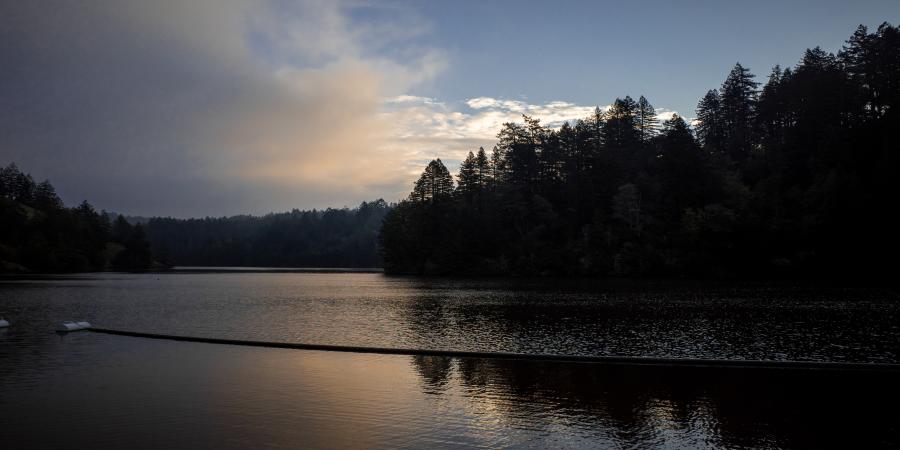Jan. 6
During the month of December, Marin Water recorded a total of 24.86 inches of rain at Lake Lagunitas helping to boost water storage levels. In this update, we explain what that means for our water supply, current water-use limits, and the drought.
What is the status of Marin Water’s Current Reservoir Storage Levels?
As of January 6, Marin Water’s reservoirs are at approximately 94% of total storage capacity – well above the average for this same time of year. We do expect water supply levels to rise more as additional runoff continues to make its way to our reservoirs if the additional rainfall forecasted for this week comes through.
More data regarding our water supply, reservoir levels, and recent rainfall can always be found at marinwater.org/water-watch.
What does the December rainfall and water storage levels mean for Marin Water’s current water-use limits, restrictions, and penalties?
Water-use limits and restrictions currently remain in place, but because the imminent water supply threat has been relieved – over the next few weeks – the District will be considering potential options for a thoughtful approach to begin to unwind some of the drought restrictions, water use limits and associated penalties currently in place. Any changes will be communicated to customers.
What does the December rainfall mean for the overall drought?
The winter rainfall has been very good news for our water supply needs and have ensured that we will have adequate water supply through the year. However, despite the current rains, we are planning for dry months ahead of us and the District is focused on the sustainability of our water system to be prepared for highly variable climate conditions. Regardless of any action the District may take in the short-term as a result of the surge in winter rainfall boosting our water supply levels, we also remain committed to our ongoing work on various drought resiliency projects. This includes exploring multiple options for augmenting our water supply during times of shortages, offering meaningful community conservation programs, and implementing new recycled water projects.
 Translate
Translate